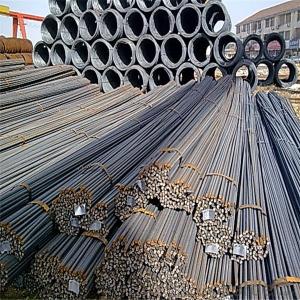Reinforced concrete iron rod for building construction
- Loading Port:
- China main port
- Payment Terms:
- TT OR LC
- Min Order Qty:
- 100 m.t.
- Supply Capability:
- 18000 m.t./month
OKorder Service Pledge
OKorder Financial Service
You Might Also Like
Item specifice
Rebar has ridges that bind it mechanically to the concrete with friction, it can still be pulled out of
the concrete under high stresses, an occurrence that often precedes a larger-scale collapse of the
structure. To prevent such a failure, rebar is either deeply embedded into adjacent structural members,
or bent and hooked at the ends to lock it around the concrete and other rebars. This first approach increases
the friction locking the bar into place while the second makes use of the high compressive strength of concrete
Our Advantage: High quality steel products from 1 class mills in China
Reasonable price
Professionalism of the products
On-time delivery
Complete documents and certificates
Sincere service to meet our clients' requirements
Product Description :
Chemical composition (%): | Steel | C | Si | Mn | P | S | Ceq | ||||
HRB335 |
0.25 |
0.80 |
1.60 |
0.045 |
0.045 | 0.52 | |||||
HRB400 | 0.54 | ||||||||||
HRB500 | 0.55 | ||||||||||
Mechanical properties | Steel | Rel/ MPa | Rm/ MPa | A/ % | Agt/ % | ||||||
≥ | |||||||||||
HRB335 | 335 | 455 | 17 |
7.5 | |||||||
HRB400 | 400 | 540 | 16 | ||||||||
HRB500 | 500 | 630 | 15 | ||||||||
Package: | Standard export packing or as customer's request | ||||||||||
Application: | Construction, building, bridge, road. ect | ||||||||||
Payment terms | 1).100% irrevocable L/C at sight. | ||||||||||
Delivery time | 15-30 days after receipt of L/C or deposit by T/T | ||||||||||
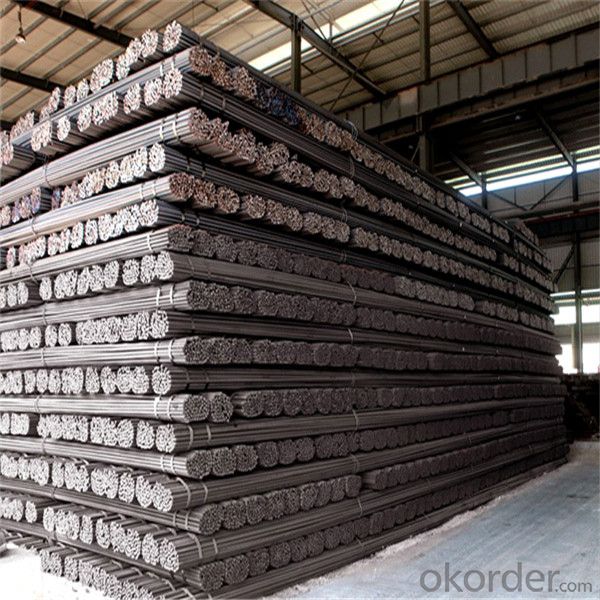
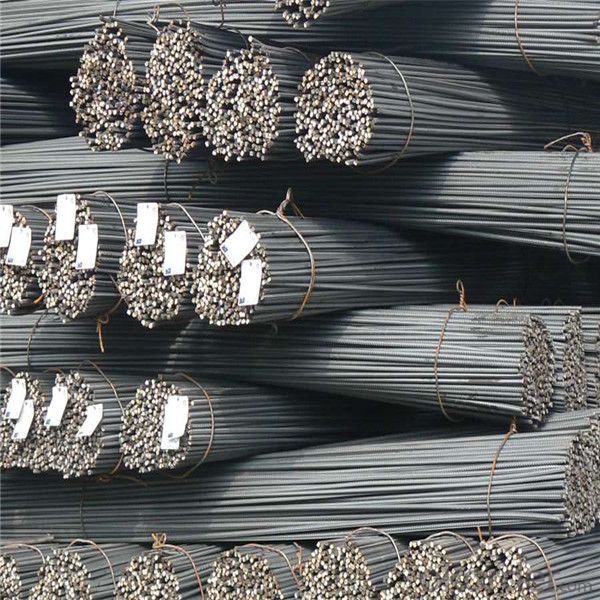
Packing:
In bundles, each bundle weight 3.5 tons. Load by container or by bulk verssel.
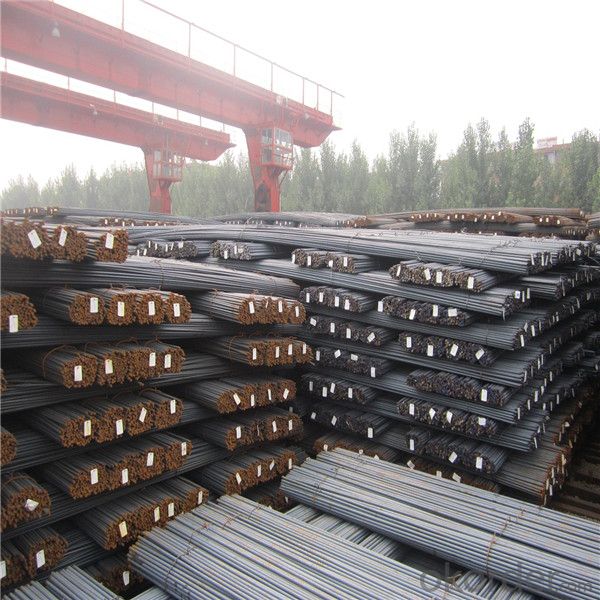
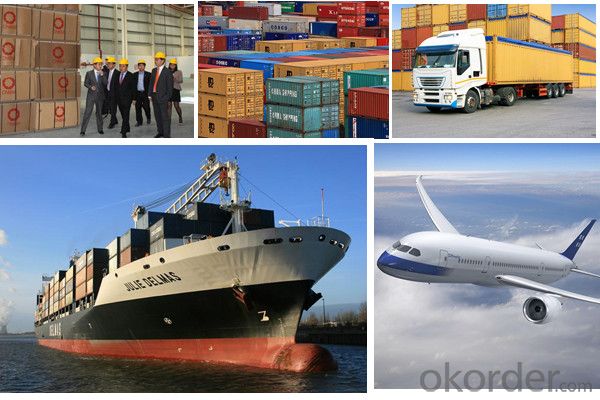
Our service
(1) We cooperate with famous factories with advanced equipment and well trained workers.
(2) We can provide factory price with trading company service.
(3) We continuously work on the improvement of our processes, guaranteeing consistently high standards
of quality to keep none compensation.
(4) We guarantee 24 hours response and 48 hours solution providing service.
(5) We accept small order quantity before formal cooperation.
(6) We deliver the agreed quality at the agreed time, reacting to changes in customer wishes in a flexible way.
(7) Due to our volume and selling power, we have excellent freight rates with shipping lines.
(8) We strive to always be fair and honest in our dealings with customers.
(9) We strive to work together with customers to achieve much more than we can achieve alone.
(10) Through our passion and commitment we aim to be a market leader in all our key markets. To maintain
our position as market leader we must continue to add value in all that we do.
FAQ:
1.Q: What's your MOQ(minimum order quantity)?
A: One full container, mixed acceptable .
2. Q: What's your packing methods?
A: Packed in bundle or bulk ..
3. Q: How can I buy CNBM products in my country?
A:Please send us an inquiry or email ,we will reply to you if there is distributor in your country
4. Q: Can we visit your factory?
A: Warmly welcome. Once we have your schedule, we will arrange the professional sales team to follow up your case.
5. Q: How long does it take to get the product if i place an order?
A:With the process of your requirements,we will pack and deliver in 3-7 days. If it is by sea shipment,it will take 15-45 days depending on different locations
- Q:Can steel rebars be used in the construction of sound barriers and noise walls?
- Yes, steel rebars can be used in the construction of sound barriers and noise walls. Steel rebars are commonly used as reinforcement in concrete structures, which are often used to build sound barriers and noise walls. They provide strength, durability, and structural integrity to these barriers, ensuring they can effectively reduce noise pollution.
- Q:How do steel rebars affect the overall stability of a structure?
- Steel rebars, or reinforcing bars, play a crucial role in enhancing the overall stability of a structure. They are primarily used to reinforce concrete structures and increase their strength and durability. The inclusion of steel rebars significantly improves the structural integrity of a building or any other construction. One of the key ways steel rebars affect the overall stability of a structure is by strengthening the concrete against tensile forces. While concrete is excellent at withstanding compressive forces, it is relatively weak in resisting tension. Steel rebars, with their high tensile strength, help counteract this weakness by absorbing and distributing tensile forces throughout the structure. This prevents the concrete from cracking or collapsing under excessive tensile loads, thereby enhancing the stability. Moreover, steel rebars also improve the structural stability by enhancing the flexural strength of a structure. Flexural strength refers to a structure's ability to withstand bending or flexing without deforming or failing. By adding steel rebars to reinforced concrete beams, columns, or slabs, the overall flexural strength of the structure increases significantly. This helps prevent excessive deflection and ensures the structure can bear the loads it is subjected to, such as the weight of the building, live loads, or external forces. Additionally, steel rebars contribute to the stability of a structure by resisting shear forces. Shear forces occur when two parts of a structure slide or move in opposite directions. These forces can cause structural failure if not adequately addressed. Steel rebars, when properly placed and anchored, restrain the concrete from shearing, thus preventing potential collapse or instability. Furthermore, steel rebars also improve the stability of a structure by enhancing resistance to seismic forces. In earthquake-prone areas, the inclusion of steel rebars provides the necessary ductility and energy dissipation capacity to withstand seismic activity. The rebars act as a network of interconnected elements, distributing the seismic forces and ensuring the structure remains stable during an earthquake. In conclusion, steel rebars greatly influence the overall stability of a structure by reinforcing concrete against tensile forces, enhancing flexural strength, resisting shear forces, and improving resistance to seismic activity. Their inclusion significantly increases the strength, durability, and integrity of a construction, ensuring it can withstand various loads, forces, and potential hazards, thereby enhancing the overall stability of the structure.
- Q:What are the different types of tests conducted on steel rebars for quality assurance?
- There are several types of tests conducted on steel rebars for quality assurance. Some common tests include tensile testing, bend testing, impact testing, hardness testing, and chemical composition analysis. These tests help ensure that the rebars meet the required mechanical properties, dimensional tolerances, and chemical composition standards, ensuring their quality and suitability for various construction applications.
- Q:What are the factors that affect the cost of steel rebars?
- The factors that affect the cost of steel rebars include the current market demand and supply dynamics, the cost of raw materials such as iron ore and scrap metal, energy costs, transportation costs, labor costs, manufacturing processes and technologies employed, government regulations and tariffs, and currency exchange rates. Additionally, global economic conditions, geopolitical events, and natural disasters can also impact the cost of steel rebars.
- Q:Are steel rebars susceptible to magnetism?
- Yes, steel rebars are susceptible to magnetism as they are typically made of carbon steel, which contains iron. Iron is a ferromagnetic material, meaning it can be magnetized and exhibits magnetic properties. Therefore, steel rebars can be attracted to magnets and are considered to be magnetic.
- Q:Why do stirrups have thread stirrups and round bars? When are they used?
- Oh, the main reason is the force, not only for steel rebar, general structure of round diameter is less than or equal to 10, 12 and above with rebar (hot-rolled ribbed bar)
- Q:Can steel rebars be used in reinforced masonry structures?
- Reinforced masonry structures can indeed utilize steel rebars to strengthen and provide structural integrity. These rebars, known as reinforcement bars, are commonly employed to fortify masonry elements such as walls, columns, and beams. They are inserted into the masonry units and then embedded in mortar or grout, establishing a robust connection between the steel and the masonry. The utilization of steel rebars in reinforced masonry structures presents various benefits. Firstly, it amplifies the load-bearing capacity of the structure, enabling it to withstand heavier loads and resist deformation. This is particularly crucial in regions susceptible to seismic activity or strong wind loads. Secondly, the steel rebars facilitate the even distribution of stress throughout the structure, averting localized failures and enhancing overall durability. Additionally, employing rebars can enhance the crack resistance of masonry, diminishing the risk of cracks and augmenting structural performance. It is important to note that the design and installation of steel rebars in reinforced masonry structures must adhere to specific codes and standards to ensure adequate safety and performance. The size, spacing, and placement of the rebars are determined based on structural calculations and engineering principles. Sufficient masonry coverage around the rebars is also vital to prevent corrosion and maintain long-term structural integrity. In conclusion, steel rebars are certainly suitable for enhancing the strength, load-bearing capacity, and durability of reinforced masonry structures. Proper design, installation, and adherence to building codes are essential to ensure the successful integration of rebars with masonry.
- Q:How to calculate the theoretical elongation of finishing thread steel?
- Rebar is a kind of special bar with discontinuous external thread. The steel bar can be connected or anchored at any section with a connector or anchor with internal thread.
- Q:Can steel rebars be used in structures with high electrical conductivity requirements?
- Steel rebars cannot be utilized in structures that demand high electrical conductivity. Although steel is a remarkably conductive substance, its implementation as reinforcement in concrete structures involves encasing it within the concrete, thus eliminating any direct electrical pathway. Consequently, steel rebars do not contribute to the overall electrical conductivity of the structure. In cases where high electrical conductivity is necessary, it is advisable to explore alternative materials like copper or aluminum. These materials possess significantly higher electrical conductivity characteristics, enabling them to fulfil the requirements of structures with elevated electrical conductivity demands.
- Q:What is the average lifespan of a reinforced concrete structure with steel rebars?
- The average lifespan of a reinforced concrete structure with steel rebars can vary depending on various factors such as the quality of construction, maintenance, exposure to environmental conditions, and usage patterns. However, with proper design, construction, and maintenance, reinforced concrete structures with steel rebars can have an average lifespan of 50 to 100 years or more. Reinforced concrete structures are known for their durability and strength due to the combination of concrete and steel reinforcement. The concrete provides compressive strength, while the steel rebars provide tensile strength, making the structure resistant to various loads and forces. However, over time, reinforced concrete structures may experience degradation due to factors such as exposure to moisture, chemicals, temperature changes, and loading conditions. These factors can lead to the corrosion of steel rebars, which is a common concern for the longevity of such structures. Corrosion occurs when moisture and oxygen penetrate the concrete, causing the steel rebars to rust. This rusting process can lead to the expansion of the steel rebars, causing cracks in the concrete and further accelerating the deterioration of the structure. To mitigate the effects of corrosion and extend the lifespan of reinforced concrete structures, various measures can be taken. These include using high-quality concrete and steel rebars, applying protective coatings, implementing proper drainage systems, and conducting regular inspections and maintenance. With appropriate maintenance and upkeep, reinforced concrete structures can last well beyond their average lifespan. However, it is crucial to note that the lifespan can vary depending on specific conditions and circumstances. Therefore, it is essential to consult with structural engineers and industry professionals to assess and determine the expected lifespan of a particular reinforced concrete structure.
1. Manufacturer Overview |
|
|---|---|
| Location | |
| Year Established | |
| Annual Output Value | |
| Main Markets | |
| Company Certifications | |
2. Manufacturer Certificates |
|
|---|---|
| a) Certification Name | |
| Range | |
| Reference | |
| Validity Period | |
3. Manufacturer Capability |
|
|---|---|
| a)Trade Capacity | |
| Nearest Port | |
| Export Percentage | |
| No.of Employees in Trade Department | |
| Language Spoken: | |
| b)Factory Information | |
| Factory Size: | |
| No. of Production Lines | |
| Contract Manufacturing | |
| Product Price Range | |
Send your message to us
Reinforced concrete iron rod for building construction
- Loading Port:
- China main port
- Payment Terms:
- TT OR LC
- Min Order Qty:
- 100 m.t.
- Supply Capability:
- 18000 m.t./month
OKorder Service Pledge
OKorder Financial Service
Similar products
New products
Hot products
Related keywords
